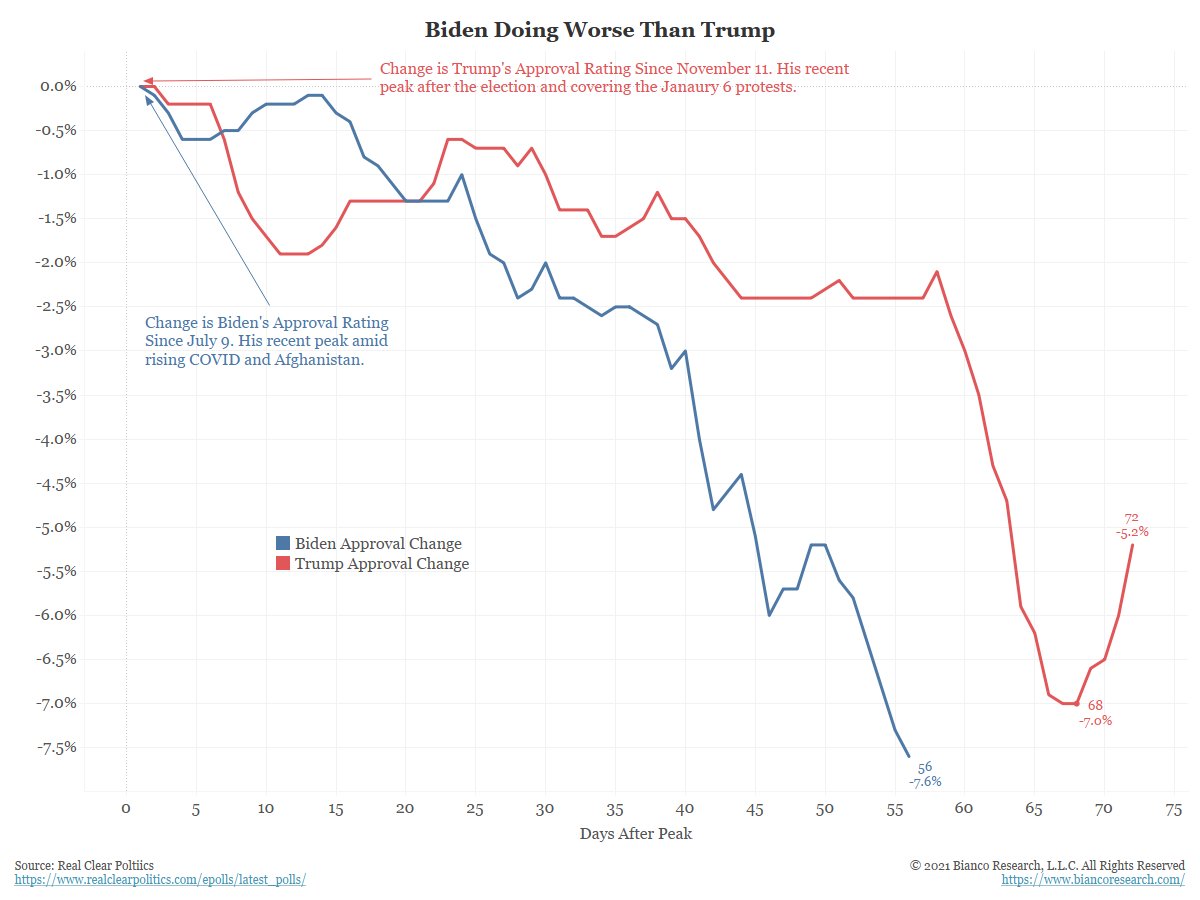
An addendum to this thread about the debt ceiling debate maybe moving from non-event to event.
Two issues to clarify.
1/5
Two issues to clarify.
1/5
https://twitter.com/biancoresearch/status/1439674710346846223?s=20
First, the Ds have the ability to raise the debt ceiling by themselves, explained here. So, they are not hostage to a filibuster.
BUT! This assumes the Ds are in agreement on a spending bill. As I noted in my earlier tweet, they are not.
2/5
reuters.com/world/us/us-se…
BUT! This assumes the Ds are in agreement on a spending bill. As I noted in my earlier tweet, they are not.
2/5
reuters.com/world/us/us-se…
In 2013 the SEC ruled that any Govt sec that does not pay on maturity date is in technical default and must be valued at $0.
So, money market funds holding T-Bills maturing while in a debt ceiling fight, must market them at $0 until paid.
3/5
So, money market funds holding T-Bills maturing while in a debt ceiling fight, must market them at $0 until paid.
3/5
A money fund holding Bills marked at zero could "break the buck" which has often caused a crisis.
What does the mkt think? The Bill Curve tells us. The "kink" (red) shows where the market thinks is the risk of not getting paid. Late Oct to early Nov is the risk.
4/5
What does the mkt think? The Bill Curve tells us. The "kink" (red) shows where the market thinks is the risk of not getting paid. Late Oct to early Nov is the risk.
4/5

BUT! the kink is only a few basis points (bps). During the Obama debt ceiling fight (2013), this type of spread got to 30 or 40 bps.
So the small size of the "kink" says the market is not particularly concerned. The placement of the kink tells us when it will be an issue.
5/5
So the small size of the "kink" says the market is not particularly concerned. The placement of the kink tells us when it will be an issue.
5/5
• • •
Missing some Tweet in this thread? You can try to
force a refresh












